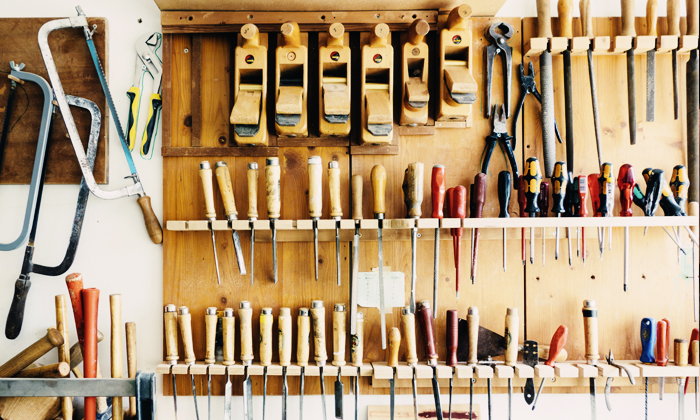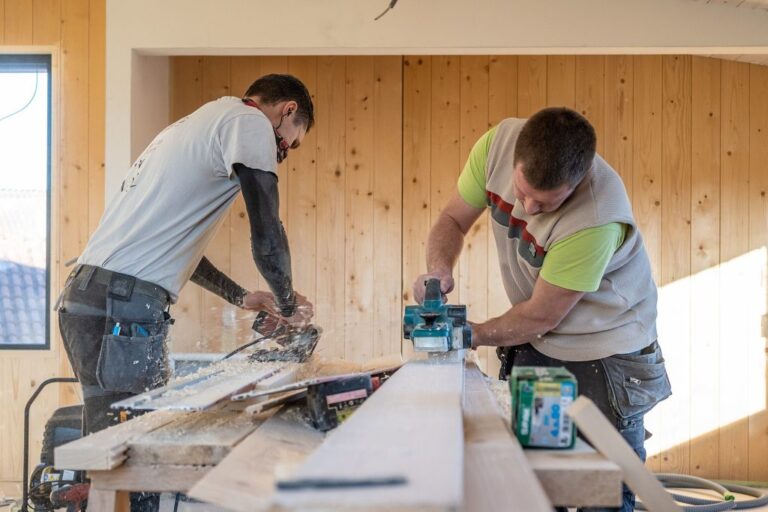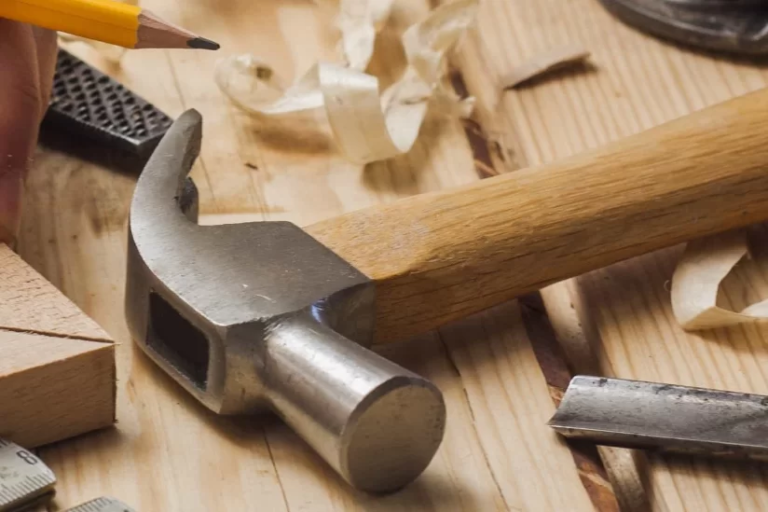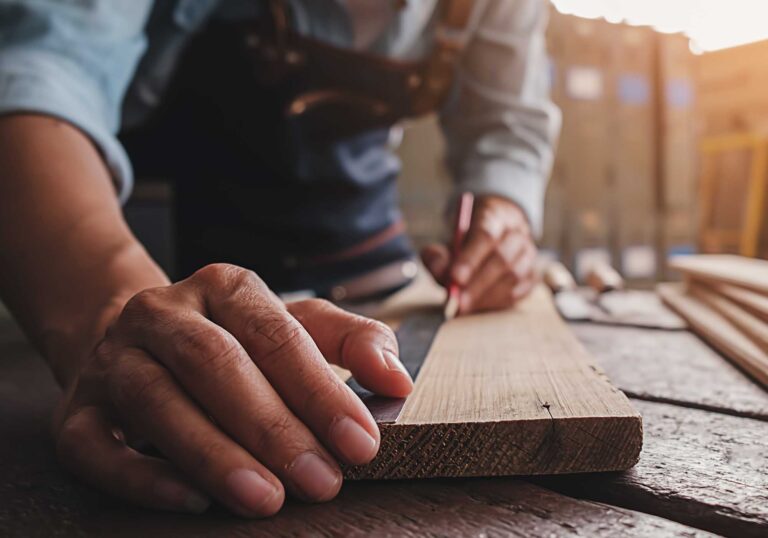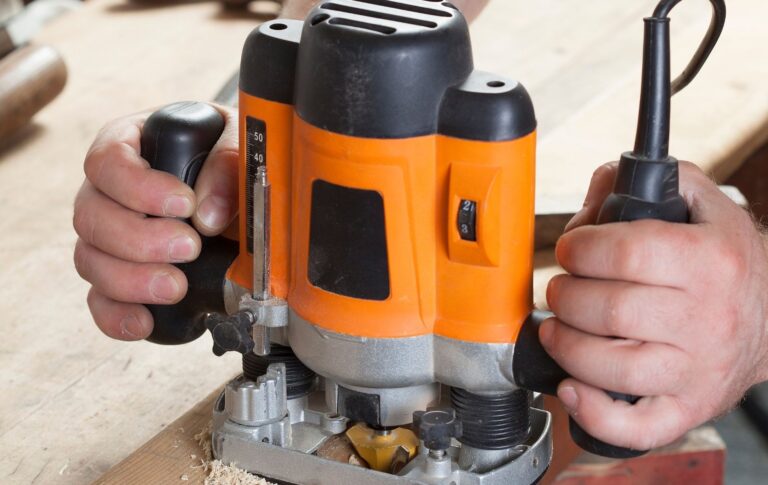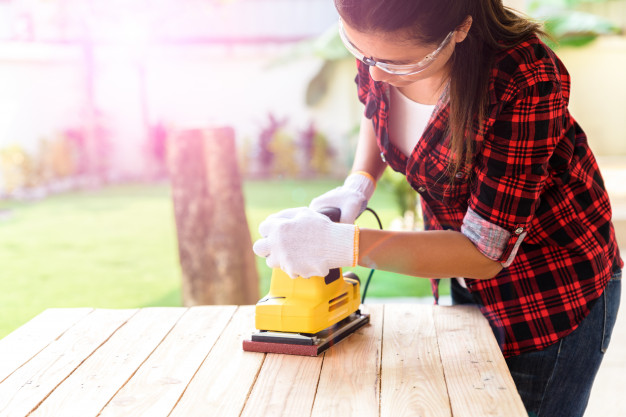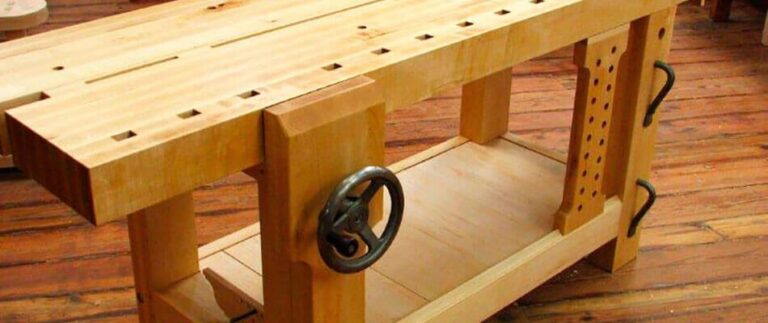DIY Woodworking: Essential Tools for Successful Projects
DIY woodworking, also known as do-it-yourself, has been gaining more and more popularity in recent years. The pleasure of creating something unique, with your own hands, has attracted a large number of people to this hobby. However, to ensure success in woodworking projects, it is essential to have the correct tools.
Having the appropriate tools is essential to achieving a satisfactory result in any DIY woodworking project. They not only make the work easier, but also guarantee more precision and quality in the final result.
The objective of this article is to present the essential tools for carrying out quality DIY woodworking projects. Throughout the text, we will cover the different categories of tools, from measuring tools to finishing tools, in addition to emphasizing the importance of safety during work.
Table of Contents
Measurement Tools
Measuring tools, such as measuring tapes, squares and levels, are essential to ensure accurate measurements and the correct leveling of materials. A wrong measurement can compromise the entire project, so it is important to have these tools and know how to use them properly.
Cutting tools
To make the necessary cuts in materials, such as wood, it is essential to have suitable saws. There are several types of saws available, such as hand saws, handsaws, circular saws and jigsaws. Each of them is more suitable for a given situation, and it is important to know their characteristics to use them correctly. Furthermore, it is essential to keep the blades sharp to obtain more precise cuts.
Fastening Tools
In the stage of fixing the materials, it is necessary to have tools such as a drill with bits, a screwdriver, a hammer and a clamp. Each of them plays an important role in fixing different types of materials. It is essential to use them according to the manufacturer’s recommendations, avoiding cracks and damage during the process.
Finishing Tools
Finally, finishing tools are essential to achieve a quality final result. The electric sander, scraper, chisel and brushes are some of the tools used in this stage. Each of them has a specific role in the finishing process, and it is important to know how to use them correctly. Furthermore, choosing the right materials to seal and protect the wood is also a crucial aspect for the perfect finish.
Conclusion
Investing in the correct tools is the first step to ensuring success in DIY woodworking projects. Measuring, cutting, clamping and finishing tools are all essential to achieving a quality end result. Furthermore, we cannot forget the importance of safety during work, using protective equipment such as glasses, respiratory mask and gloves.
Therefore, we encourage you, the reader, to put your DIY woodworking projects into practice by using the right tools and following appropriate safety measures. With the essential tools and proper attention to detail, you are sure to succeed in your projects and enjoy the pleasure of creating your own woodworking pieces.## 1. Measuring Tools
Measuring tools are essential to the success of any DIY woodworking project. The correct use of the tape measure, square and level is essential to ensure accurate measurements and correctly leveled materials.
The tape measure is used to measure lengths, heights and widths, allowing you to have the exact dimensions of the materials you will use in your project. The square, in turn, is essential to check that the pieces are perfectly fitted and aligned, avoiding problems during assembly.
The level is a fundamental tool to ensure that the materials are correctly leveled. This is especially important in carpentry projects, where any misalignment can compromise the entire structure.
Each measuring tool plays a key role in DIY woodworking projects. The measuring tape, square and level are essential so that you can make accurate measurements and correctly level the materials. Therefore, it is important to invest in quality tools and learn how to use them correctly to obtain satisfactory results in your projects. ## 2. Cutting tools
The second important category of tools for DIY woodworking projects are cutting tools. These tools are essential for correctly shaping and sizing the materials used in projects.
The hand saw is one of the basic tools for cutting small pieces of wood. It is a simple and practical option for more precise cuts, especially in difficult to access areas. The saw is recommended for straight cuts, especially in thicker wooden boards and plates.
For more complex and precise cuts, the circular saw is a great choice. With it, you can make straight and angled cuts in various directions. The jigsaw is ideal for curved and detailed cuts, such as cutouts in more elaborate carpentry projects.
It is important to highlight that regardless of the tool chosen, it is essential to keep the blades sharp to obtain more precise cuts and avoid damage to the materials.
Each of these tools has different applications and it is important to know their characteristics to choose the most suitable one for each DIY woodworking project. With the correct use of these cutting tools, you can make precise cuts and obtain the desired results in your projects.
Furthermore, when working with cutting tools, it is important to follow all safety measures to avoid accidents. Use protective equipment, such as safety glasses , to protect your eyes from possible wood fragments, and gloves , to avoid cuts and injuries to your hands.
In this sense, investing in quality cutting tools and keeping them up to date is essential for the success of DIY woodworking projects. ## 3. Clamping tools
When it comes to DIY woodworking projects, clamping tools are essential to ensure materials stay tight and secure. Among the main fastening tools, the drill with bits , the screwdriver , the hammer and the clamp stand out .
A drill with bits is essential for making precise holes and allowing the fixation of screws, bolts and other joining elements. It allows the use of different types of drills, suitable for different materials, such as wood, metal or concrete. It is important to choose the right drill for each type of material to be drilled, avoiding cracks or damage during the process.
The screwdriver is a versatile tool that facilitates the work of fixing screws. It is more efficient and faster than manually using screwdrivers, in addition to providing a more uniform tightening, avoiding damage to the wood. With the screwdriver, it is possible to control the speed and strength of the tightening, ensuring precise fixing.
The hammer is a classic and indispensable tool in any woodworking project. It is used to fix nails, adjust parts and shape wood. It is important to use the hammer correctly, applying force appropriately to avoid damage to materials or possible injuries.
Clamps are also essential for keeping the pieces steady while the glue dries . They ensure the secure union of materials, preventing them from moving or shifting during the drying process. Additionally, clamps can be used to apply pressure to specific areas and obtain a perfect fit.
To avoid cracks and damage during the fixing process, it is important to follow some tips. Firstly, it is recommended to drill guide holes before screwing, especially in more fragile materials. Furthermore, it is essential to use screws suitable for each type of wood, considering the correct length and gauge. And finally, it is important to avoid over-tightening the screws or applying excessive pressure with the hammer, as this could compromise the integrity of the wood.
In short, fastening tools play a crucial role in DIY woodworking projects. The drill with bits, screwdriver, hammer and clamps enable the precise and safe joining of materials, preventing cracks and damage. By following the tips for correct use and taking the necessary measures, it is possible to guarantee the success and durability of your carpentry projects. Invest in these essential tools and enjoy satisfying results in your DIY projects. ## 4. Finishing tools
In the final step of a DIY woodworking project, finishing tools play a crucial role in ensuring a quality result. Among these tools, we can highlight the electric sander , the scraper , the chisel and the brushes .
The electric sander is responsible for giving a uniform and smooth finish to the wood surface. It removes imperfections and irregularities, leaving it ready to be sealed or painted. It is important to use different types of sandpaper, from coarser ones for removing material to finer ones for a more refined finish.
The scraper , in turn, is an excellent tool for removing chips and burrs from wood. It can be used to make small adjustments to details and corners of wooden pieces, ensuring a precise and precise finish.
The chisel is an instrument used to make precise and detailed cuts in wood. It can be used to create fittings, cutouts and notches, providing a personalized and unique look to carpentry projects. It is important to be careful when handling this tool, as it has an extremely sharp blade.
Finally, brushes are essential for applying sealers and varnishes to wood. They ensure uniform coverage and help protect the wood against damage caused by moisture and natural wear. It is important to choose good quality brushes, with soft and resistant bristles, to obtain an impeccable result.
When using these finishing tools, it is essential to choose the right materials to seal and protect the wood. There are several options of sealers, varnishes and paints on the market, each suitable for a specific type of wood and desired finish. Therefore, research and consult specialized professionals to choose the most suitable products for your project.
In short, finishing tools are essential for achieving a quality end result in DIY woodworking projects. The electric sander, scraper, chisel and brushes are instruments that enable the refinement, customization and protection of wood. Don’t forget to invest in suitable materials and follow all safety measures to ensure the success of your project. ## 5. Safety and protective equipment
When carrying out DIY woodworking projects, it is essential to ensure personal safety and protect yourself against possible accidents. To do this, it is necessary to use personal protective equipment, such as protective glasses, a respiratory mask and gloves.
Safety glasses are essential to protect your eyes from debris, wood chips and dust that can be produced when working with tools. Furthermore, they prevent possible eye injuries, ensuring the carpenter’s visual integrity.
The respiratory mask is another essential item for the carpenter’s safety. During the process of cutting, sanding and finishing wood, fine particles and dust can be released into the air, posing a risk to respiratory health. Therefore, using a suitable mask is necessary to avoid inhaling these harmful substances.
Gloves are protective equipment that help prevent hand injuries . When working with cutting tools, such as hacksaws and circular saws, for example, it is important to avoid direct skin contact with the sharp blades. Gloves also provide a better grip and protect your hands from possible scratches and cuts.
It is important to highlight that in addition to using this protective equipment, it is essential to follow all safety measures when working with carpentry tools. An organized work environment, where tools are stored properly and a correct posture when handling these tools are essential to avoid accidents.
Therefore, when undertaking any DIY woodworking project, remember to invest in protective equipment and follow all safety recommendations. This way, you can enjoy the satisfaction of creating unique pieces with your own hands, with quality and without putting your health and physical integrity at risk.,## Conclusion
At the conclusion of this post, we highlight the importance of having the correct tools to achieve satisfactory results in DIY woodworking projects. To recap, we mention the essential tools, such as measuring, cutting, fixing and finishing, which are fundamental to the success of any venture in this area.
Investing in the appropriate tools is crucial, as they guarantee precision, speed and safety at work. A tape measure, a square and a level are essential when measuring and correctly leveling materials, while hand saws, hacksaws, circular saws and jigsaws are essential for cuts.
When attaching materials, having a drill with bits, a screwdriver, a hammer and clamps makes all the difference. These tools will provide the necessary support so that the project is firm and well structured. Finishing tools, such as an electric sander, scraper, chisel and brushes, are responsible for giving the final touch, leaving the work with a quality finish.
Furthermore, it is essential to highlight the importance of safety throughout the process. Using protective equipment, such as protective glasses, respiratory mask and gloves, is essential to avoid accidents and guarantee the carpenter’s physical integrity.
Finally, we encourage readers to put their DIY woodworking projects into practice, using all the necessary tools and safety equipment. Remember to always invest in the correct tools, as they will make all the difference in the final result. With dedication, care, and the right tools, you can complete DIY woodworking projects safely and successfully.

